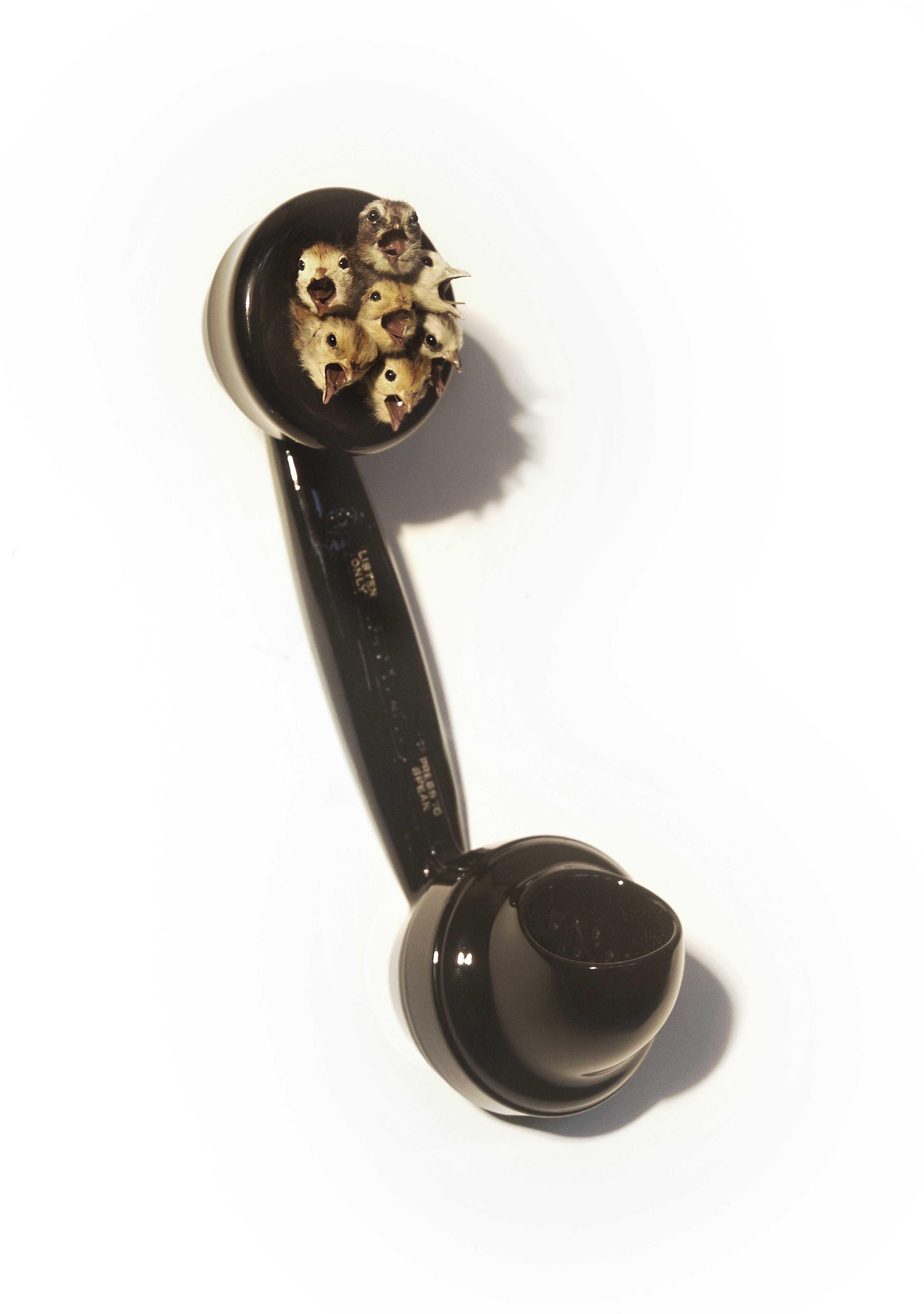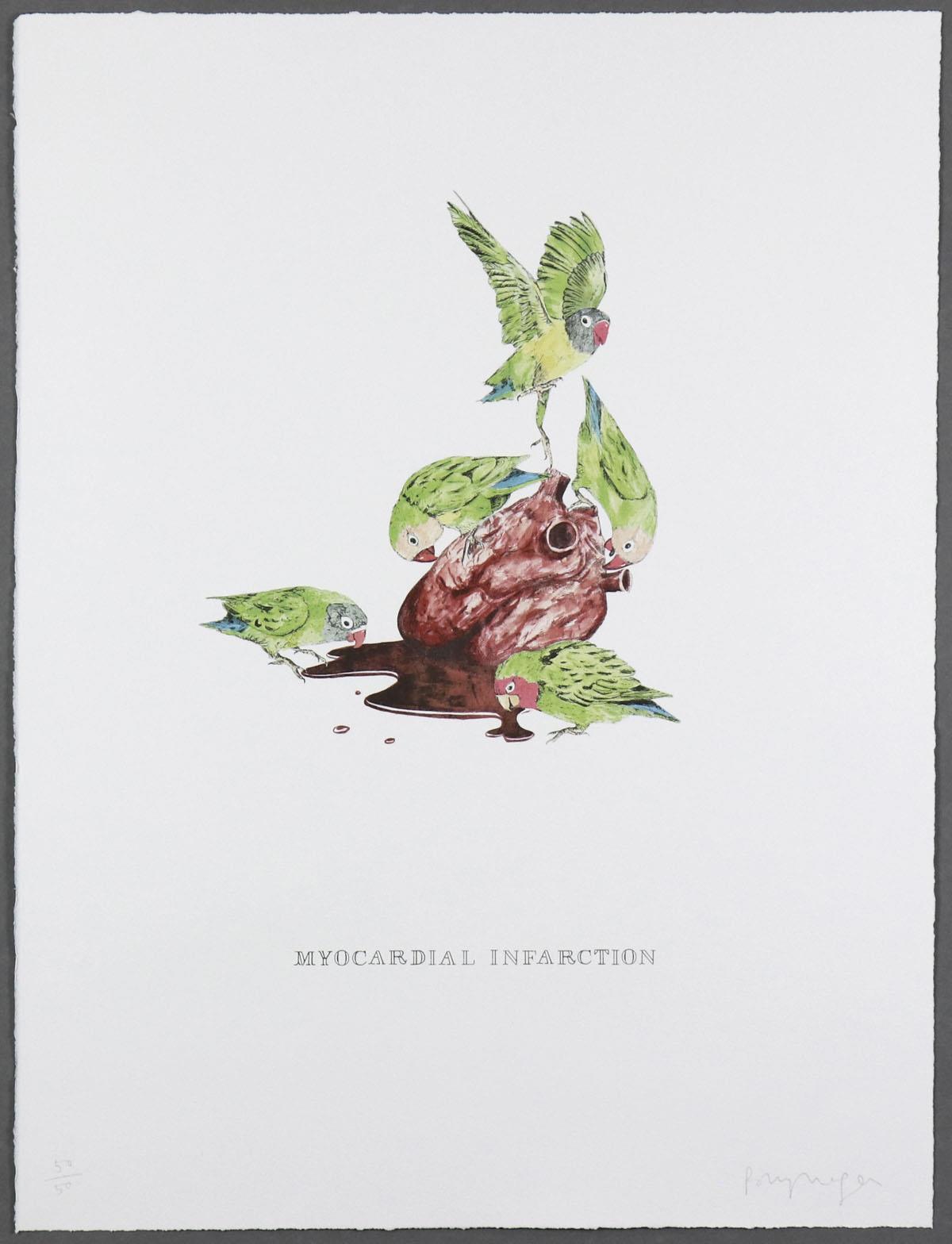In the early noughties, Polly Morgan was scanning curiosity shops and street markets for odd and kitsch taxidermy objects for her grander London apartment. She realised that what she was looking for simply didn’t exist. After some failed attempts to make some herself, with the questionable guidance of a DIY book in taxidermy, she was on a train to Edinburgh to attend a £150 one-day course on the hands-on subject with George Jamieson; a renowned Scottish taxidermist living and working in his 14th century tower house in the outskirts of the Scottish capital.
Preceding her trip to Scotland, Morgan had for a couple of years observed closely where artistic talent and ambition could take you. Working as a bartender at the Electricity Showrooms bar in East London, a hang-out spot of the Young-British-Artists such as
Damien Hirst and Tracey Emin, she was daily serving the upper echelon of the art world. By 2004 these were the artists riding a wave of success, supported by advertising mogul and mega-collector Charles Saatchi, who again padded them on their backs with the exhibition ‘Sensation’ at the Royal Academy in 1997.
Morgan knew her future didn’t lie within the confinements of a normal day-job. After the graduation in English literature in 2002 she was already experimenting with different artistic mediums such as drawing, modelling and photography, beside her full time job. It was the one-day tuition with Jamieson that would carve her artistic path. Morgan’s artistic talent and natural flair for the 150-years-old craftsmanship, would make her one of Britain’s most talented contemporary taxidermists.
_2011.jpg)
POLLY MORGAN
Myocardial Infarction (Monochrome), 2011
Edition of 10
2 Artist Proof (APs)
53(w) x 69(h) cm
21.18(w) x 27.36(h) inches
_2011.jpg)
POLLY MORGAN
Myocardial Infarction (Monochrome), 2011
Edition of 10
2 Artist Proof (APs)
53(w) x 69(h) cm
21.18(w) x 27.36(h) inches
|
|
|
53(w) x 69(h) cm
21.18(w) x 27.36(h) inches
|
Monochrome Lithograph with hand-torn edge on Somerset velvet 300g.
Signed and numbered on front.
Edition of 10
|
|
Back in London, Morgan started to work with birds, rodents and small mammals and not before long she was commissioned by a previous colleague from the bar to do a few pieces for his new restaurant, Bistrotheque, around the corner. Unlike the traditional masculine taxidermy of a trophy stag head or the pheasant standing in the forest clearing, Morgan’s work was contemporary. Small birds in bell-jars; a magpie with a jewel in its beak; and another standing on the handset of an old black analogue phone. Banksy, a relatively new artist that would come to define the London street-art scene, impulsively bought one of her works during the evening - and later invited Morgan to create a piece for his annual show ‘Santa’s Ghetto’ in London’s West-end.
Taxidermy emerged in Victorian England in the middle of the 19th century. The craftsmanship, where the taxidermist stuffs and mounts deceased animals, became increasingly popular during a time of technological innovation and prosperity during the industrial revolution. Showing animals with a lifelike effect quickly became not only a display of wealth for the elite, but also an important part for research and the British educational system. In contrast to a different understanding of animal welfare in the 1850’s, the artists and craftsmen of today comply to strict ethical rules of only using animals which have deceased naturally or by unpreventable deaths.
Morgan doesn’t seek to mimic the natural habitats of her subjects or present them as they may have been in wildlife. Instead, the artist places the animals in unexpected and unnatural settings to encourage the viewer to look at them with fresh eyes and with no preconceptions. The work itself is mindful, exquisite and often dark. Coiled snakes are sculptures, mounted on marble plinths; lovebirds sit gazing at their reflections in miniature mirrors above tiny splayed-out mouse rugs; and wilting pheasant chicks in
Still Birth quietly defy gravity as they’re helplessly suspended from resin-coated balloons.

POLLY MORGAN
Over and Out, 2011
Edition of 10
20(w) x 30(h) cm
7.87(w) x 11.81(h) inches

POLLY MORGAN
Over and Out, 2011
Edition of 10
20(w) x 30(h) cm
7.87(w) x 11.81(h) inches
|
|
|
20(w) x 30(h) cm
7.87(w) x 11.81(h) inches
|
Bakelite telephone handset and taxidermy quail chicks in a glass box with laquered MDF wood.
Edition of 10
|
|
The dialogue on the universal act of living and dying is one which will carry relevance in art discourse for a long time to come. Morgan grew up in Cotswold in the British countryside, and all through her childhood she was used to being surrounded by animals. This has given her a natural respect for living beings, but also a first-hand understanding of the circle of life. To her and most of her contemporaries, the taxidermy work is part of a bigger conversation about our relationship with animals.
As a taxidermist Morgan only works with the animals made available to her through ethical sources, which can create limitations to the sculptures she wishes to make. To avoid any unintended mistakes through trial and error, the artist starts each new sculptural composition from detailed drawings. It is during the drawing process that she can effortlessly experiment with composition, angles, proportions and colours.
Considering the artist’s immense talent for sketching and drawing, Morgan’s study drawings mostly live a quiet and overlooked existence in the background of her practice. Some exceptions are works like ‘Dunnock’, ‘Greenfinch’ and ‘Robin’ (2012), part of the body of works in the solo exhibition ‘Endless Plains’. Here, beautifully drawn bird-nests are shown in frames, with the species of the bird habiting such nest is lying serenely on top of the frame. Another example is a pair of lithographic editions,
Myocardial Infarction (2011); the only two lithographs in her practice.

POLLY MORGAN
Myocardial Infarction, 2011
Edition of 50
4 Artist Proof (APs)
53(w) x 69(h) cm
21.18(w) x 27.36(h) inches

POLLY MORGAN
Myocardial Infarction, 2011
Edition of 50
4 Artist Proof (APs)
53(w) x 69(h) cm
21.18(w) x 27.36(h) inches
|
|
|
53(w) x 69(h) cm
21.18(w) x 27.36(h) inches
|
Lithograph with hand drawn elements and torn edge on Somerset velvet 300g.
Signed and numbered on front.
Edition of 50
|
PRICE (INCL. VAT)
|
£ 630.00
|
|
Only 3 left at this price
|
|
Myocardial Infarction depicts a group of Lovebirds feeding from a heart. The image follows the concept of Morgan’s work by focussing on the utilization of death, whilst referencing the drawings of illustrators such as John James Audubon; an American artist and ornithologist, and author of ‘The Birds of America’ (1827-1839). Usually regarded as social and affectionate creatures, the brightly hued Lovebirds in Morgan’s Myocardial Infarction scavenge over the bleeding heart. The construction bears a contradiction between beauty and brutality that is an unsettling reminder of primal instinct in life, immortalised in death by the artist. Often for her works, Morgan chooses a title providing an element of dark humour, adding to the understanding of the piece: ‘Myocardial Infarction’ is the Latin and medical term for ‘heart attack’. The perfected study drawings led to a work of the same title for the group exhibition ’Nature of the Beast’ (2013) at The New Art Gallery.
Beginning with the invitation to show her work at Banksy’s exhibition ‘Santa Ghetto’ in 2005,
Polly Morgan’s work has been widely exhibited. Her contemporary taxidermy has been included in thirty group shows and thirteen solo shows, including ‘Psychopomps’ (2010) at Haunch and Venison and ‘Endless Plains’ (2012) at All Visual Arts. In 2019 she received a special invitation to exhibit at the prestigious Royal Academy Summer Exhibition in London. The artist is currently preparing a new body of work for a show at the Bomb Factory in London in October 2020. Morgan lives and works in London.
Shortly before the solo exhibition ‘Endless Plains’ in London in 2011,
Polly Morgan collaborated with Eyestorm on two exclusive limited print editions,
Myocardial Infarction. The pair was released as lithographic prints with hand-torn edges. One of the prints is an edition of 50 with hand drawn elements - with a second small edition of only 10 in monochrome.
You can find more details about the two print editions,
Myocardial Infarction and
Myocardial Infarction (Monochrome), on
Polly Morgan’s artist page
here.
Polly Morgan is a member of the Guild of Taxidermists, which adheres to and promotes the law pertaining to taxidermy, and keeps a detailed log of all animals in stock. All taxidermised animals are either road casualties or have been donated to the artist by pet owners and vets after natural or unpreventable deaths